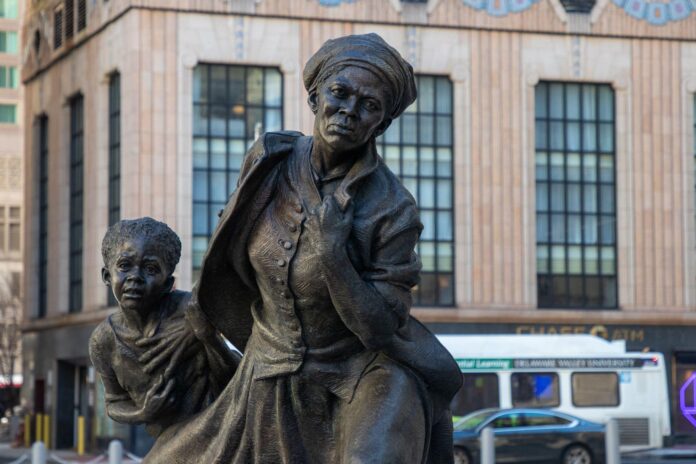A statue of Harriet Tubman commissioned by the city of Philadelphia aims to celebrate underrepresented stories in public spaces and help Philadelphians connect with one another. But the project is instead dividing residents, drawing critics who say that the selection process was unfair because it was never open to proposals from other artists. Many also take issue with the fact that the sculptor, Wesley Wofford, is a white man, and argue that the city missed an opportunity to support a Black artist.
“It is hurtful and it is traumatising,” Dee Jones, a textile artist, said during a virtual public meeting on 15 June organised by city public art officials. “If it was an open call and Wesley was chosen, it would be fine. But because the process wasn’t open, that’s the big issue… The process was not equitable. This is what we fought for, what [Tubman] fought for.”
Wofford, an artist based in North Carolina, received the $500,000 commission to design a bronze sculpture of the famed abolitionist for the North apron of Philadelphia’s City Hall. The city invited him to create the work for its public art collection after another sculpture of his, The Journey to Freedom, received positive reception when it was temporarily installed outside City Hall earlier this year. That 7ft work is itself a copy of a taller Tubman statue that Wofford created in 2019 for a private building in Dallas. According to the Philadelphia Inquirer, the artist said that the response on social media to the original was so great that he created a smaller statue to tour cities. Philadelphia is one of 22 hosts.
Marguerite Anglin, Philadelphia’s director of public art, says the city had tried to purchase The Journey to Freedom, but was unable to due to legal and copyright issues. Officials instead supported funding for Wofford to create a similar sculpture that would tell a “Philadelphia-focused” story about Tubman, who was born enslaved in Maryland and fled to Philadelphia in 1849. The finished statue will represent one of Philadelphia’s first artworks honouring a historic African American female figure.
“We feel it would be inappropriate for us to hire another artist, hire a Black artist, or a different artist to recreate the expression of another artist,” Anglin said during the 15 June meeting. She added that the city would typically send out a call for public commissions and give priority to artists who reflect the diversity of the community. “This is a unique situation where we are not starting from the beginning.”
Maisha Sullivan-Ongoza, of the Sankofa Artisans Guild, said that artists “feel cheated that we can’t get a chance to see what renditions other artists can offer us.” In March, she and others formed the grassroots organisation Celebrating the Legacy of Nana Harriet Tubman to push back on the commission. “I was thinking about Nana Harriet and how she risked life and limb to be free so no one white would benefit off of her person anymore… and it’s continuing now,” Sullivan-Ongoza said in the meeting. “I know the statue had a lot of emotions in people, but I know a lot of artists who can generate that same level of emotion. [Wofford] doesn’t have a monopoly on being able to capture what people want to feel about Nana Harriet.”
Philadelphia hosted the travelling statue The Journey to Freedom from January to March, and officials estimate that it drew close to 4 million people who either visited it or responded positively to it on social media. Among them is Karen Sutton, a tour guide for City Hall, who said in the virtual forum that, “I loved the statue from the minute I saw her.” Addressing Wofford, she added: “I thought you just captured her. It doesn’t matter what colour you are, you just got it.”
Responding to criticisms during the meeting, Wofford said that he understood the importance of hiring artists of colour but described the Underground Railroad—the network that Tubman navigated to lead 60 t0 70 enslaved people to freedom— as “a biracial endeavour”. He plans to follow through with the commission. “I am an ally of the untold stories, and if asked, I want to assist in people telling their stories in our public spaces,” he told Artnet News in an email. “Saying no would not only be insulting, but would rob us all collectively of building the healing bridges and symbols that will bring us together.”
The city wants Wofford to deliver the statue by November 2023, but a contract for the commission has not yet been signed, the Inquirer reported. The Office of Arts, Culture and the Creative Economy is gathering feedback from Philadelphians until 13 July, inviting them to fill out a public input survey of seven questions to determine the theme and messaging of the statue.

























